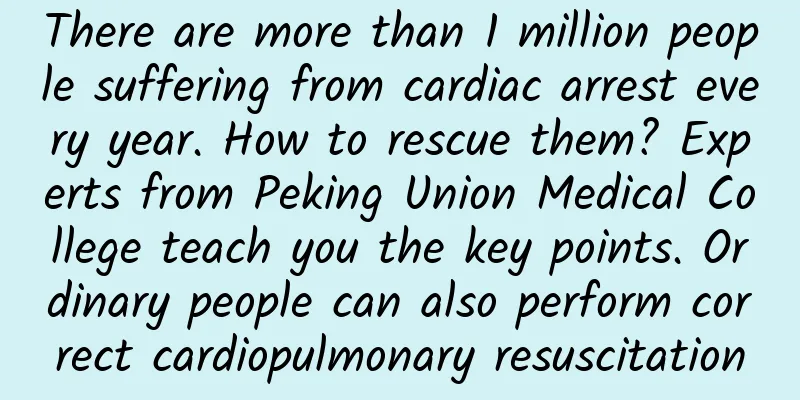Watching the ice tongue from the edge of the abyss is like peeking into the underworld from the edge of the Naihe Bridge.

|
Editor’s Note: Scientific expedition travel notes refer to articles or books written by researchers or explorers who go to a certain area for scientific investigation or exploration and record what they see, hear and feel. This article was published on the China Science Popularization Expo website in December 2013 by Wu Yuhu, a researcher at the Northwest Plateau Institute of Biology, Chinese Academy of Sciences. It is still thrilling and exciting to read today, and it feels like you are actually there. Part 1 Strange regenerating glacier Wuyitake is located in Akto County of the Western Kunlun Mountains. On August 4, about 40 kilometers away from the highway, we set up camp on the edge of the forest area at an altitude of 2,710 meters. We wanted to camp closer to the glacier, but there was a wooden bridge that was not very solid. The bridge was built by crossing the river with more than a dozen spruce trunks about 8 meters long and as thick as buckets. The bridge deck was OK, but the wood on both sides of the bridge deck had been washed loose. It was no problem for people to cross, but it was hard to say for cars. To be on the safe side, we gave up the plan to cross the river and camp. This is the northern slope of Kungai Mountain in the West Kunlun Mountains. On June 24, 1987, Zhang Qingsong and Li Bingyuan, associate researchers from the Institute of Geography of the Chinese Academy of Sciences, and Wang Fubao, professor of Nanjing University, discovered during an investigation that the glacier here is a regenerative glacier fed by avalanches. Usually, the ice tongue of a continental glacier is above the forest line, but the lower edge of the glacier here extends down into the spruce forest, with an altitude of only about 2,800 meters, more than 700 meters lower than the upper limit of the forest in this area. It is one of the lowest glaciers at the end of the glaciers in the northern Qinghai-Tibet Plateau, so it is quite special. Contrary to the crystal white color of the glacier, the lower part of the glacier here is dark gray, especially the ice tongue that extends far out, which looks like slowly flowing chocolate ice cream from a distance, probably because of the contamination of black soil from the forest. If we hadn't felt the hardness and coldness after stepping on it, we would never have thought that this was a mountain of ice and snow. It felt like we had arrived at a coal preparation yard in a large coal mine. Looking back, we actually climbed up the moraine outside the glacier along a one-person-wide, straight-up, and sharply curved winding path. Part 2 Watching the Ice Tongue from the Abyss We braved the drizzle and crossed the ice tongue that looked like a pile of coal gangue, climbing higher. Near the foot of the main peak, the fine rain had turned into snowflakes. I stood on a ridge where only half of the slope remained due to collapse, and leaned over to look at the "root" of the ice tongue under my feet, which seemed to be more than a hundred meters deep, connecting the main glacier peak that was several hundred meters high and almost vertical at the top, and the thousand-meter-long ice tongue at the bottom. But the top of this "root" is not flat, but with peaks and ridges, like the raging waves of a frozen sea. The twisted cliffs and cracks are unfathomable, forming a momentum of shaking the earth and mountains; the gullies are crisscrossed, and the meltwater shuttles and meanders down, more like a group of dragons riding the waves, wandering around the mountains and streams, appearing and disappearing from time to time. In addition, the roaring sound of water, the drifting of pearl mist, the deep and ethereal haziness caused by the breeze and snow, the yin and yang contrast of the setting sun, and the sound effect of the water flowing through the stream, made me feel a little dizzy. In front of my eyes, there was a hazy feeling similar to concentrating and observing and about to appear a multi-dimensional picture, as if there were a group of evil spirits lingering and permeating. Rather than looking down at the raging waves from a cliff, it would be more like peeking into the eerie and terrifying "underworld" from the edge of the Naihe Bridge. My heartbeat quickened, and it seemed as if the whole earth was shaking and spinning. I knew that my concentration was far from perfect, so I quickly took a few steps back. A local boy standing far behind me told me to leave this place quickly through an interpreter, saying that one of their cows had fallen into this icy stream and died. I was afraid that I would fall off the cliff due to the dizziness, so we left here quickly and climbed up the flowing stone slope on the other side. However, the little boy didn't want to climb any further after reaching halfway up, and kept urging me to come down, saying that avalanches often occurred on the top of the mountains in that area, and had killed several sheep. He seemed extremely frightened when he spoke, and he lowered his voice, as if he was afraid of being heard by the snow-capped mountain. He walked down the mountain as he spoke, as if an avalanche would happen at any moment. I think I have climbed countless rocky slopes, and have been to many steep cliffs, snowy cliffs, and icy glacier bases. I have not only touched and stepped on icebergs and snowy peaks, but I have also used a small hoe to dig through vertical ice cliffs without knowing the extent of the world, and I have taken pictures with them leisurely, but I have never encountered a glacier collapse. So, I still continue to climb higher regardless of life and death, because there may be more plants distributed on the rocky slope, and maybe I will discover new species. When we were almost at the base of the glacier, a few balls of snow suddenly fell down. I looked up and saw snow balls falling from the top of the glacier from time to time, and more and more of them, some as small as fists and some as big as basketballs. Some fell to the ground in pieces, and some scattered in the air. The translator waiting halfway up the mountain called me to come down the mountain quickly. I turned around and looked back at where I had just been. There were still snowballs falling, and they were not only bigger in size but also more in number. One of them was just above the base of the ice tongue. Perhaps this regenerated glacier was being replenished by this type of avalanche. We watched for more than ten minutes, hoping to see the imagined huge avalanche or ice collapse of the kind of landslide that would exaggerate the timeliness and speed of my escape after another adventure, but we never got what we wanted. The snowballs were still falling irregularly, neither fast nor slow, neither big nor small. The little boy told me through the translator that the thick part was all snow, not ice, but I didn't believe it. How could there be such a thick layer of snow in summer? I carefully identified it with a telescope for a long time, but still couldn't figure it out. Although the child's words were not credible, the snow falling intermittently was clearly snowballs. These snowballs that scatter in the air give people the feeling of Halley's meteor flying across the sky or a comet passing by when viewed from afar, which still puzzles me to this day. Part 3 Another "Nuwa Relics Stone" Our camp was on a terrace by the river at the edge of the forest. To avoid being disturbed by the snoring of the old gentlemen at midnight, I set up my tent under a tree close to the river, away from the group as usual. I sleep more soundly every night with the even sound of waves lulling me to sleep. After the rain, the sky cleared up. In the afternoon, we returned early to dry our bedding and clothes. Xiao Xu came to help me nail the tent. When he picked up a fist-sized stone that I kicked at him, he shouted in surprise: "Angkor, there are fossils here, they are leaves." I quickly dropped the stone I was using to nail the tent and ran over in surprise. Sure enough, this stone of unknown shape turned out to be a limestone fossil with layers of broad-leaved leaves arranged in a disorderly manner, another "Nuwa Relic Stone". I happily called Deputy Captain Wu and Fei Yong, who were in the tent at the time, to come out and see, while Xiao Xu and I continued to search nearby. Who knew that most of the surrounding stones were actually fragments of fossils, and even the slightly larger stone I just threw down was a fossil, but most of the leaf veins were not very clear or the leaf shape was incomplete. The whole team came out to help search, and finally found two large stones about two meters squared under a mountain spring more than a hundred meters away from our camp. The entire stone was almost entirely made of leaf fossils. So, without even bothering to eat, we immediately found tools and worked for more than two hours, knocking down a bunch of fossils. This was one of the biggest gains of our trip. It is preliminarily determined that they will be of great significance to the study of the succession of local forest vegetation. This batch of fossils and the fossils found in the Altun Mountain Nature Reserve last year are from the same spring, so they can serve as mutual verification on some theoretical issues. More importantly, for this batch of fossils, we have not only found their original source, but also found that there are still cold-dry and wet-cold coniferous and broad-leaved deciduous forests here. This is not only conducive to the comparison of fossils between the two places, but also to the comparison of ancient plants with existing species, so as to analyze the trajectory of forest changes. In this sense, this fossil is more researchable than the "flying stone" on the barren ridge of the Altun Mountains last year. Strangely, nature chose leaves to convey ancient messages in different places and at different times. Although the ancients could not predict the present, we, as modern people, can explore many mysteries of the ancients with the help of these leaf fossils. As the saying goes, one leaf can tell the coming of autumn. Now it seems that one leaf can not only tell us about the coming of autumn, but also reveal many biological and geological mysteries in the Kunlun Mountains. We were all very excited that night and discussed for a long time the age of the fossils, the types of leaves, and the similarities and differences with the fossils collected last year. We didn't go to bed until late at night. Part 4 The life-saving tree Because the temperature was high yesterday, the river was particularly large at night. The sound of rushing water mixed with the rumbling sound of rolling boulders echoed throughout the valley, sometimes even giving people a feeling of landslides and earthquakes. Some boulders hitting the river bank made people feel like an earthquake, which made me feel a little insecure. However, I was too lazy to get up and move, so I stayed in the warm duck down quilt and fell asleep without knowing when. Early in the morning, I was awakened by a loud noise and Deputy Captain Wu shouted at me to get up. As I dressed slowly, I thought to myself, what's the big deal? It's just that the water is a little too much. Old men just have too much to do and too little to sleep. When I crawled out of the half-collapsed tent, I realized that following Deputy Captain Wu's shout, everyone had gotten up and were standing by my tent along the river, talking about how the river water was so high last night that the wooden bridge upstream had been washed away and all the wood used to build the bridge had disappeared without a trace. My tent was originally about two meters away from the river bank, but now the one-meter-wide river bank near the water has long disappeared. The other meter-wide river bank near my tent has also cracked a large hole of about 10 centimeters right next to my tent door. The flood has hollowed out the bank, and the big tree has tilted towards the center of the river. The soil on half of the tree roots has been washed away by the water. Only a thick root extending to the bottom of my tent is still firmly "grasping" the earth and has not been washed away. The tent rope that had been tied to the tree pole had already been torn apart, but I was completely unaware of it. No wonder half of the tent collapsed. Seeing all this, I finally believed what Vice Captain Wu said about me "planning to feed the fish". If it weren't for the big tree with thick leaves and deep roots, which stabilized the soil and protected the bank, I might have really fed the fish last night. So I quickly moved, and the big tree was eventually washed away by the water. Author: Wu Yuhu Please indicate the source of the reprint. Reprinting without authorization is prohibited. |
Recommend
Why has China Merchants Bank’s micro-customer service become an industry benchmark?
According to sources, on November 5, the number o...
Entering the peak period! If you don’t want tragedy to happen, be alert to these 8 behaviors!
In the past month, Many drowning incidents have b...
Zhejiang Asian Games | Plants also exercise series: Sensitivity causes "ADHD"
Diverse Asian civilizations have given birth to a...
Can you judge the taste of lotus root by looking at the number of holes? These 3 tips for selecting lotus root are crucial, but many people don’t know them!
gossip Lotus root is known as "China's s...
If you want to quickly acquire 100,000 users, just use this one channel!
Many friends who have read the article told me th...
Google is uploading Android 10 source code to the AOSP Android open source project
September 4 news Earlier today, Google began rele...
6 ways to promote your app and attract new users. Do you know how to use them all?
Since the development of China's Internet, in...
Milk tea is more refreshing than coffee, it turns out it’s due to the different extraction methods!
Every time I go to a mall, there is always this k...
iOS development history: from iPhone OS 1.0 to iOS10, finally supports harassment blocking
At the early morning of September 8th, Beijing ti...
8 dietary tips to prevent cardiovascular disease, but many people don't follow them
A friend chatted with Huazi and asked a question....
How to plan a low-cost community operation event?
Nowadays, everyone is calling for building privat...
What else can you do on the Spring Equinox besides "standing an egg"? Let's do the Eratosthenes experiment to estimate the circumference of the Earth!
Open any modern introductory science book or sear...
This disease is more common in winter and can instantly cause you to become crooked in the mouth and eyes, or paralyzed in bed. Treatment is a "race against time". How to identify and prevent stroke early?
Many people think that stroke is a disease that o...
Amino acids were found in the samples brought back by Hayabusa 2. Does this mean that alien life has been discovered?
Recently, there were news reports that the Japan ...









